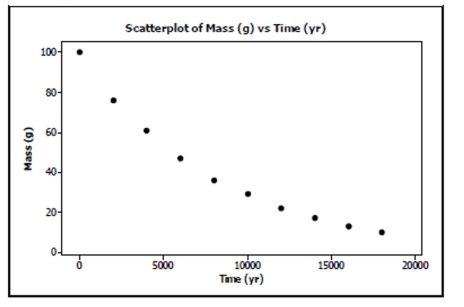Carbon dating QuarkNet, a project funded by the National Science Foundation and the
U.S. Department of Energy, poses the following problem on its website:
"Last year, deep within the Soudan mine, QuarkNet teachers began a long-term
experiment to measure the amount of carbon-14 remaining in an initial 100-gram sample
at 2000-year intervals. The experiment will be complete in the year 32001. Fortunately, a
method for sending information backwards in time will be discovered in the year 29998,
so, although the experiment is far from over, the results are in."
Here is a portion of the data: 
a. Straighten the scatterplot by re-expressing these data and create an appropriate model
for predicting the mass from the year.
b. Use your model to estimate what the mass will be after 7500 years.
c. Can you use your model to predict when 50 g of the sample will be left? Explain.
Correct Answer:
Verified
View Answer
Unlock this answer now
Get Access to more Verified Answers free of charge
Q17: Interpret the slope of your model in
Q58: Baseball coaches use a radar gun to
Q63: A study examined the number of
Q88: Put to Work Some students have to
Q125: The bigger the stop sign, the
Q135: During a science lab, students heated
Q136: Associations For each pair of variables,
Q137: The average movie ticket prices in
Q143: During a science lab, students heated
Q145: Match the following descriptions with the
Unlock this Answer For Free Now!
View this answer and more for free by performing one of the following actions

Scan the QR code to install the App and get 2 free unlocks

Unlock quizzes for free by uploading documents